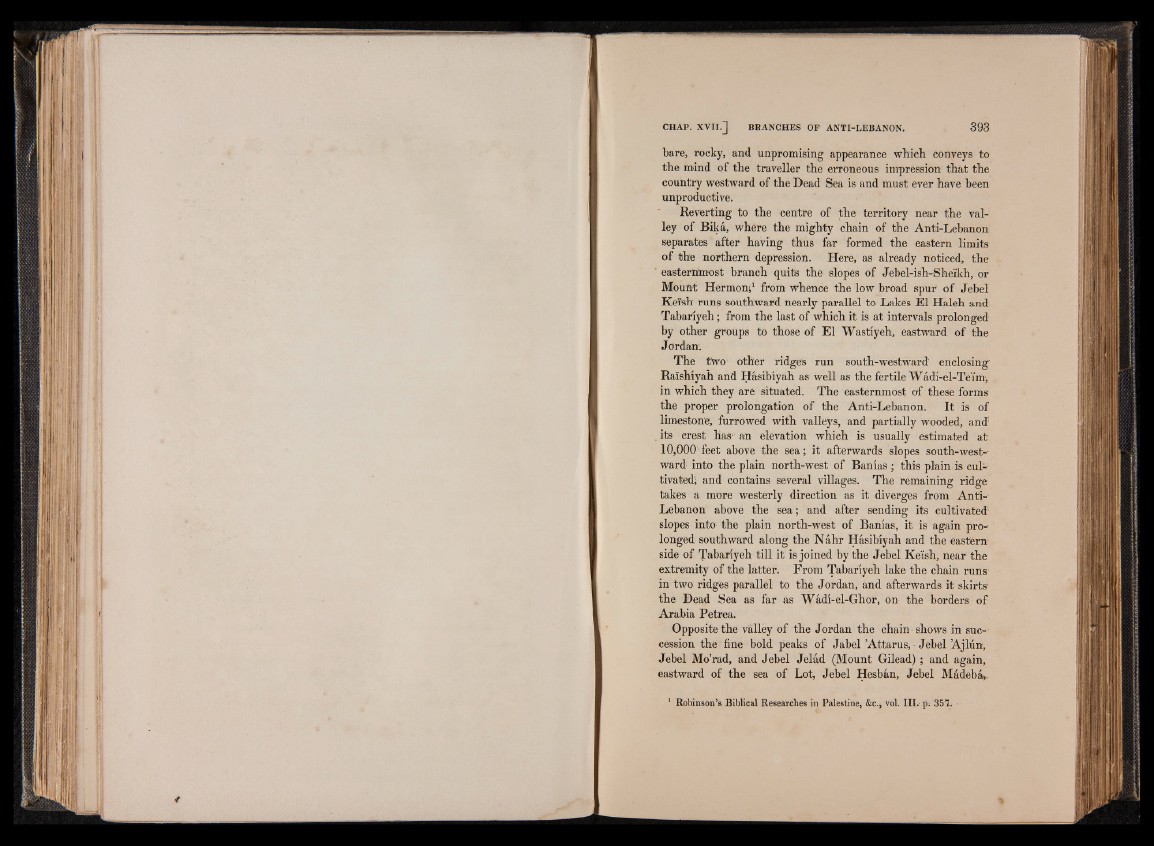
bare, rocky, and unpromising appearance which conveys to
the mind of the traveller the erroneous impression that the
country westward of the Dead Sea is and must ever have been
unproductive.
Reverting to the centre of the territory near the valley
of Bika, where the mighty chain of the Anti-Lebanon
separates after having thus far formed the eastern limits
of the northern depression. Here, as already noticed, the
easternmost branch quits the slopes of Jebel-ish-Sheikh, or
Mount Hermonj1 from whence the low broad spur of Jebel
Kelsh runs southward nearly parallel to Lakes El Haleh and
Tabariyeh; from the last of which it is at intervals prolonged
by other groups to those of El Wastiyeh, eastward of the
Jordan.
The two other ridges run south-westward? enclosing’
Ra'ishiyah and Hasibiyah as well as the fertile Wadi-el-Tei’m,
in which they are situated. The easternmost of these forms
the proper prolongation of the Anti-Lebanon. It is of
limestone, furrowed with valleys, and partially wooded, and5
its crest has1 an elevation which is usually estimated at
10,000 feet above the sea; it afterwards slopes south-west--
ward into the plain north-west of Banias ; this plain is cultivated',
and contains several villages. The remaining ridge
takes a more westerly direction as it diverges from Anti--
Lebanon above the sea; and after sending its cultivated
slopes into the plain north-west of Banias, it is again prolonged
southward along the Nahr Hasibiyah and the eastern
side of Tabariyeh till it is joined by the Jebel Keish, near the
extremity of the latter. From Tabariyeh lake the chain runs
in two ridges parallel to the Jordan, and afterwards it skirts1
the Dead Sea as far as Wadi-el-Ghor, on the borders of
Arabia Petrea.
Opposite the valley of the Jordan the chain shows in su c cession
the fine bold peaks of Jabel ’Attarus, - Jebel Ajlun*,
Jebel Mo’rad, and Jebel Jelad (Mount Gilead) ; and again,
eastward of the sea of Lot, Jebel Hesban, Jebel Madeba>.
1 Robinson’s Biblical Researches in Palestine, &c., vol. III. p. 351,